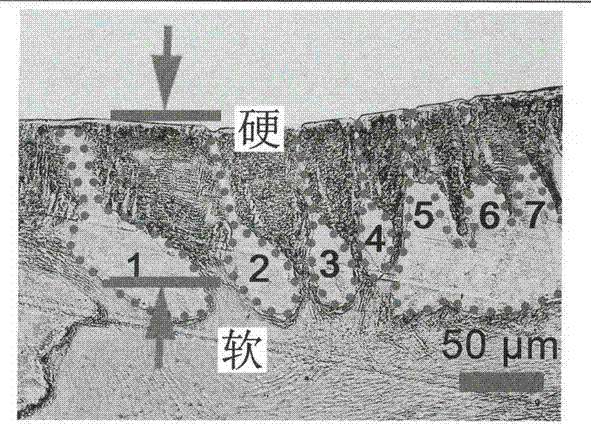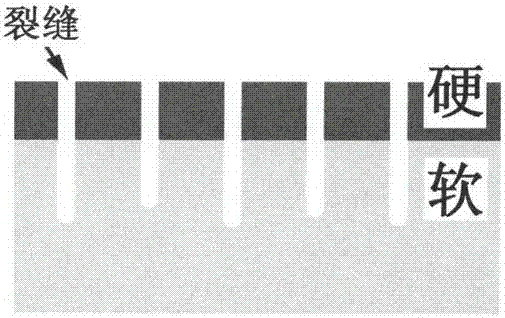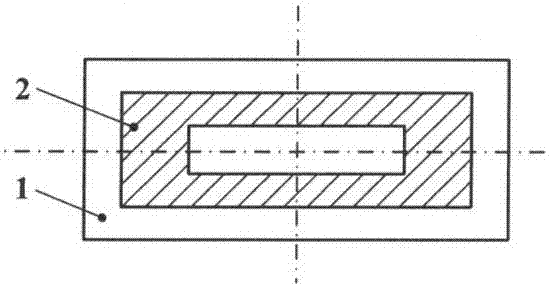Bionic stress sensing structure and formation method thereof
A bionic and conductive ink technology, applied in the field of strain sensing, can solve the problems of low cost, complicated preparation process, poor stability of synthesis process, etc.
- Summary
- Abstract
- Description
- Claims
- Application Information
AI Technical Summary
Problems solved by technology
Method used
Image
Examples
Embodiment Construction
[0031] Such as figure 1 As shown, according to the inspiration of the slice structure of the scorpion crack receptor, the following figure 2 The bionic strain sensing structure on the paper substrate 1 is shown. figure 1 In the middle, the arrow mark is the hard chitin shell on the surface of the scorpion, and the soft subcutaneous tissue below the scorpion. The hard chitin shell is divided by the 1-7 cracks marked in the figure, forming a parallel crack belt structure. The bionic strain sensing structure inspired by this is such as figure 2 As shown, the upper layer is a dense and hard conductive layer adhered to a softer paper substrate 1. At the same time, there are multiple parallel cracks on the conductive layer, forming a strain sensing structure similar to the scorpion crack receptor structure. Its structure is characterized by printing and processing a hard conductive layer containing multiple parallel cracks (crack bands) on a soft base material (paper base layer), wh...
PUM
 Login to View More
Login to View More Abstract
Description
Claims
Application Information
 Login to View More
Login to View More - R&D
- Intellectual Property
- Life Sciences
- Materials
- Tech Scout
- Unparalleled Data Quality
- Higher Quality Content
- 60% Fewer Hallucinations
Browse by: Latest US Patents, China's latest patents, Technical Efficacy Thesaurus, Application Domain, Technology Topic, Popular Technical Reports.
© 2025 PatSnap. All rights reserved.Legal|Privacy policy|Modern Slavery Act Transparency Statement|Sitemap|About US| Contact US: help@patsnap.com



